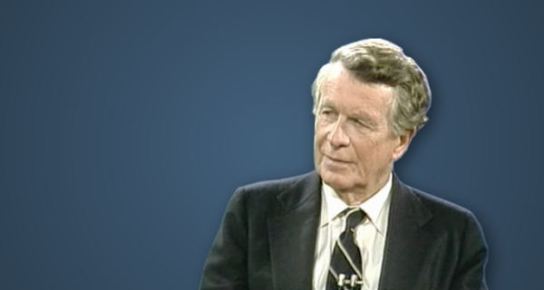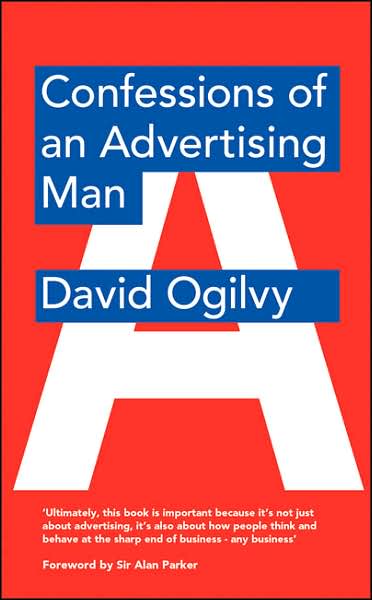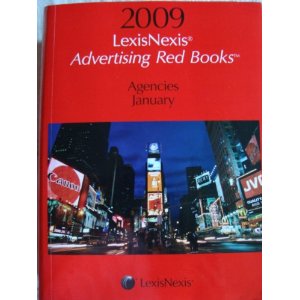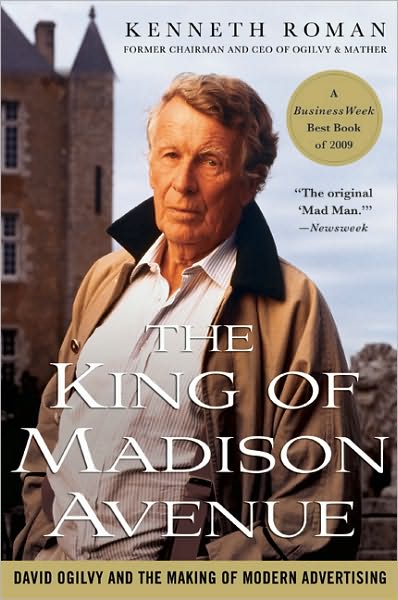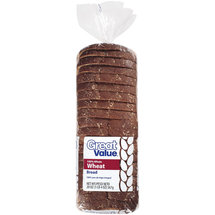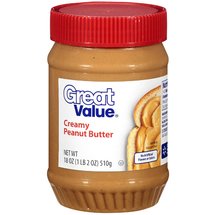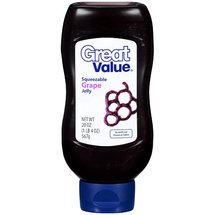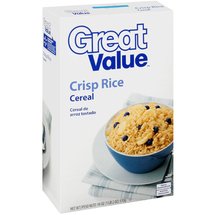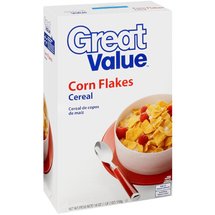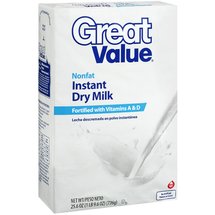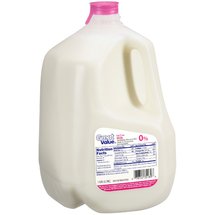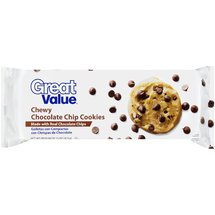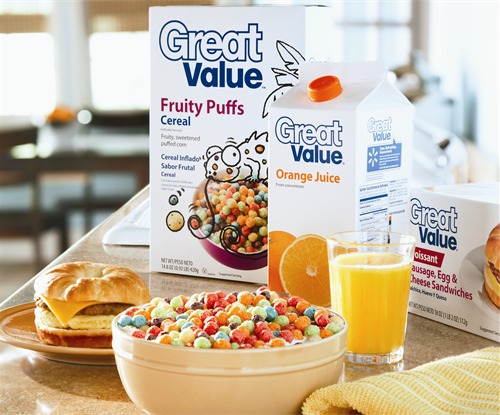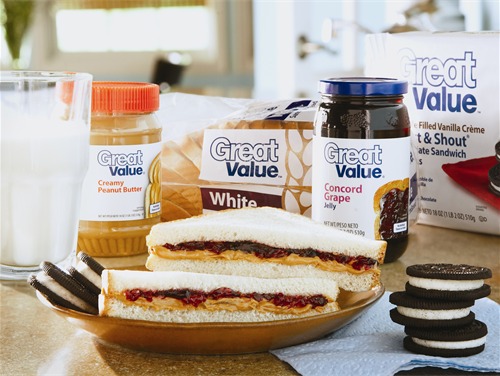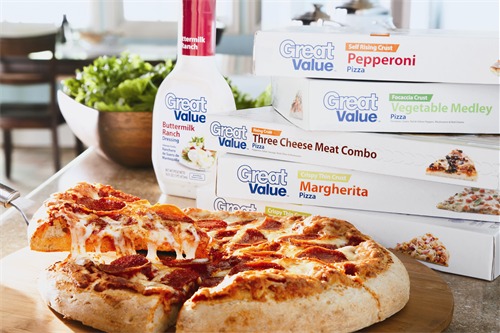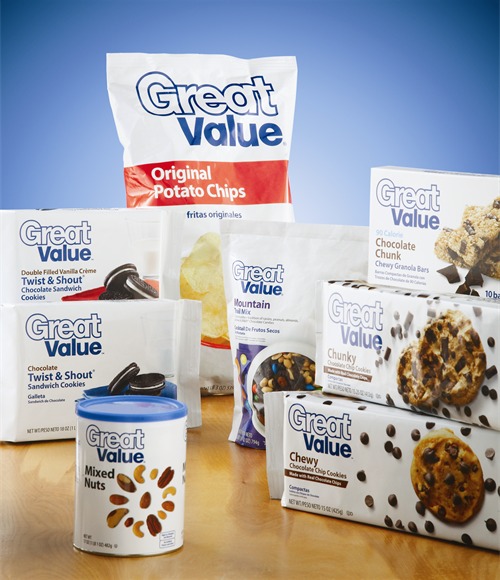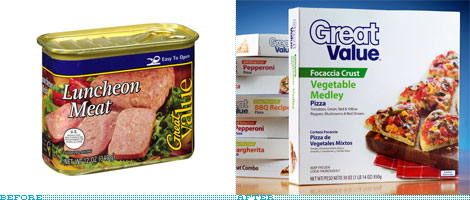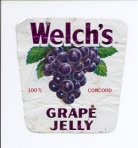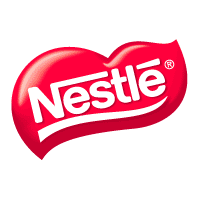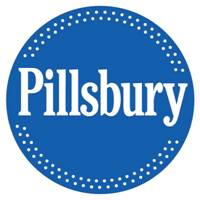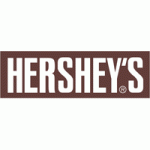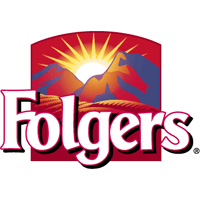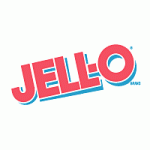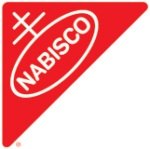Discussion #3: Brand Loyalty–Brand and Price–Some examples
Hello Everyone!
For shaving cream I buy Barbasol.
For diet soda I buy Big K at Kroger because it is cheaper than Coke.
For peanut butter and bread I buy Kroger’s cheapest.
Kroger has a value brand category that is the cheapest.
For breakfast cereal I buy the Kroger brand for corn flakes and fruity rice crisps.
For batteries I buy Ravovac because they are the cheapest.
I usually do not buy a national brand because they are usually the most expensive and you can invariably find a product of equal or greater quality and much lower price.
Compare Kroger prices with those of the national brands and you will see what I mean.
You can get a box of saltine crackers for less than $1 or pay nearly $2 for a national brand name. I buy the Kroger discount value brand for this as well.
I just noticed this new discussion topic after I posted the one due at 5.
Raymond
Unit 3, Part II, Assignment 3b, Part 2
Assignment #3b, Part 2
The Campaign: Create a mock Wal*Mart advertising campaign.
Read:
http://ezinearticles.com/?Advertising—How-to-Find-Your-Target-Audience&id=2385285
2. Review the platforms of advertising available from Unit 2.
3. Estimate the cost of each ad placement:
NOTE** this is a crisis response campaign. Soon we will be doing a new product campaign.
Part 2 is due Tuesday, July 27 at 5 p.m.
1. Identify the Wal*Mart Brand.
Walmart has several brands but the most important is Great Value which is used primarily for grocery items.
Walmart has expanded its private store brand to over 5,200 items in over 100 product categories.
The Walmart Great Value brand is now the largest grocery brand in the world.
Pictured below are some examples of the Walmart Great Value private store brand of grocery items:
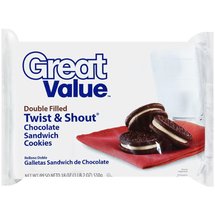
Wal-Mart CMO Defends Private-Label Expansion
WalMart switching to cheap generic items due to economy? Great Value brand
Background Information
“…The retailer’s Great Value brand, first introduced in 1993, spans more than 100 categories and is the country’s largest food brand in both sales and volume.
With a strong focus on better quality, Walmart worked with several hundred suppliers and product testing facilities to:
- Test more than 5,250 products against leading national brands to ensure Great Value quality is equal to or better;
- Conduct more than 2,700 consumer tests to compare the flavor, aroma, texture, color, and appearance of Great Value products against leading national brands;
- Change the formulas for 750 items including: breakfast cereal, cookies, yogurt, laundry detergent, and paper towels; and
- Introduce more than 80 new products, such as: thin crust pizza, fat free caramel swirl ice cream, strawberry yogurt, organic cage-free eggs, double stuffed sandwich cookies, teriyaki beef jerky and more, all at unbeatable prices….”
- “…According to new consumer data from GfK Custom Research North America, 75 percent of shoppers, say the “current economic conditions” are playing a big role in their decision whether to purchase national or grocery store brands. Additionally, three out of 10 consumers in the study say they are now “buying more store brand products” compared to a year ago, and more than 77 percent of respondents “agree” that the store brands they buy “are as good as, if not better than, national brand products.”
“…According to new consumer data from GfK Custom Research North America, 75 percent of shoppers, say the “current economic conditions” are playing a big role in their decision whether to purchase national or grocery store brands. Additionally, three out of 10 consumers in the study say they are now “buying more store brand products” compared to a year ago, and more than 77 percent of respondents “agree” that the store brands they buy “are as good as, if not better than, national brand products.” …”
“…Walmart operates Walmart discount stores, supercenters, Neighborhood Markets and Sam’s Club locations in the United States. The Company operates in Argentina, Brazil, Canada, Chile, China, Costa Rica, El Salvador, Guatemala, Honduras, India, Japan, Mexico, Nicaragua, Puerto Rico and the United Kingdom. The Company’s securities are listed on the New York Stock Exchange under the symbol WMT. More information about Walmart can be found by visiting http://www.walmartstores.com. Online merchandise sales are available at http://www.walmart.com and http://www.samsclub.com. ..”
http://walmartstores.com/pressroom/news/9028.aspx
2.Target Audience
The primary target audience are current Walmart shoppers who may buy a few or no national brands but are currently purchasing the Walmart Great Value private label mainly due to the significantly lower price compared to the national brands.
The secondary target audience is current Walmart shoppers who also have the discretionary income to purchase national brands at Walmart and usually do so and might consider switching to the Great Value brand.
The tertiary target audience for the advertisements are consumers who either never shop or only rarely shop at Walmart but who have the discretionary income to purchase and usually purchase both national brand names and value brands from Walmart competitors such as Kroger and Target.
3. Review the platforms of advertising available from Unit 2.
The advertising platforms considered for the advertising campaign include the following:
Direct Mail
Advantages: High audience selectivity, flexibility, no ad competition with the same medium, allows personalization.
Limitations: Relatively high cost per exposure, “junk mail” image
Newspapers
Advantages: Flexibility, timeliness, good local market coverages, broad acceptability, high believability.
Limitations: Short life, poor reproduction quality, small pass-along audience.
Magazines
Advantages: High geographic and demographic selectivity, credibility and prestige, high-quality reproduction, long life and good pass-along readership.
Limitations: Long ad-purchase lead time, high cost, no guarantee of position.
Internet
Advantages: High selectivity, low-cost, immediacy, interactive capabilities.
Limitations: Small audience, relatively low impact, audience controls exposure.
Radio
Advantages: Good local acceptance, high geographic and demographic selectivity, low-cost.
Limitations: Audio only, fleeting exposure, low attention, fragmented audiences.
Television
Advantages: Good mass-market coverage, low-cost per exposure, combines sight, sound, and motion, appealing to the senses.
Limitations: High absolute costs, high clutter, fleeting exposure, less audience selectivity.
Outdoor
Advantages: Flexibility, high repeat exposure, low-cost, low message competition, good positional selectivity.
Limitations: Little audience selectivity, creative limitations.
4. Estimate the cost of each ad placement:
I recommend an outdoor digital billboard or sign located in front of each Walmart store where the advertisements can be frequently rotated and changed over the internet.
A digital billboard or sign offers the advantages of flexibility, high repeat exposure, low message competition, and good positional selectivity.
The cost would be the purchase of the billboard, running the billboard and the of producing the advertisement for the billboard.
The cost of digital billboards is falling and runs between $100,000 to $500,000 depending upon the size and whether its is a fixed or mobile unit.
The monthly cost of running the ad varies from $1,000 to $10,000 per month again depending upon the size and whether it is fixed or mobile.
The ads are relatively simple and can be produced either in-house or through an advertising agency.
Photographs of the Great Value brand products would be the main image used in the advertisements together with the text message and images of national brands.
Walmart already has an excellent website for looking up all the products carried in their stores for both national brands and the Great Value private store brand.
http://www.walmart.com/cp/Grocery/976759
The website address can be included in the advertisement for latter lookup by the prospective Walmart shopper.
Once the above outdoor billboards and signs are in place, a thirty-second radio and television commercial promoting the Great Value private store brand should be considered.
I would keep the advertisement simple with video or photographs of a selection of Great Value products and a text message.
The production of the commercial would cost between $50,000 to $250,000 depending upon the creatives used.
The cost of each spot would vary by each city or market selected, the length of the advertisement campaign, when the spot is run and what demographics are trying to be reached.
Walmart should first test the commercials in local markets to determine the relative pull of the advertisements in terms of increased sales.
Background Information
Bright Lights, Big Impact
“…Edina is part of a group of trendsetting advertisers that are pioneering the use of what the Federal Highway Administration, or FHWA, calls electronic variable message signs. These large, computerized displays marry the choice location of traditional roadside billboards with the opportunity for customization and frequent updating that is the hallmark of Web advertising. Today, there are nearly 800 of these digitized billboards in the U.S. It’s a small number compared with 450,000 traditional billboards across the country, but it’s growing fast. The Outdoor Advertising Association of America, an industry trade group, projects that the number of digital billboards in the U.S. will expand at a rate of several hundred per year.
Though some big companies, like McDonald’s (NYSE:MCD), are active advertisers on such venues, most digital billboards–as with traditional billboards–feature ads for regional and local companies. Prices vary according to a sign’s size and location, but the cost of advertising on a digital billboard runs from $1,200 to $10,000 a month, and the ad campaigns are typically not expensive to create. Most ad agencies can handle the work, and some companies even design their own digital billboard ads in-house using basic design software such as Adobe Illustrator and Apple (NASDAQ:AAPL) Final Cut Pro.
It’s not difficult to under stand why digital billboards are attractive to advertisers. They are bright and eye-catching and can convey multiple marketing messages at once. Marketers can arrange to have computerized ads change with much greater frequency than typical outdoor ads, timing their message to the season, the day of the week, and even the time of day. For instance, Edina Realty used its billboards to promote a number of time-sensitive sales and special offers. …”
“…Moreover, the technology that makes the signs work has fallen in price by more than half over the past few years, to $200,000 to $500,000 per sign, depending on size. In turn, the rates charged to advertisers have come down. And in September, the FHWA issued a memo stating that digital billboards violated no law. The ruling assuaged concerns among local and state officials who worried that the signs could pose a traffic hazard. It is generally accepted that if a motorist takes his or her eyes off the road for two seconds or longer, the likelihood of an accident greatly increases. The FHWA is working on a safety study concerning digital billboards; it is scheduled to be released at the end of 2009. For the time being, the agency recommends that the images on digital billboards remain static for at least four seconds–long enough, the agency believes, to ensure that the signs are no more distracting than standard billboards. (Many municipalities go further, requiring that an ad remain in place for no less than six seconds. …”
Digital Signage Replaces Static Print and Billboards
“…Digital signage involves a huge array of technologies that virtually replaces traditional retail signs. The static print signs and billboards people are used to seeing will soon be replaced with digital signage composed of electronic content and messages that are both targeted and interactive for everyone.
Plasma display panels, liquid crystal displays (LCDs) and scrolling message boards are currently the most common methods of projecting full-motion videos, sounds and text content. With digital signage, a manager or retailer is able to control and display any message they choose and deliver it to the public quickly and effectively. …”
// //
“…The benefits of using digital signage can be condensed into five important aspects:
1. Monitor and Manage Your Content
Digital signage software allows managers or retailers to easily add, remove or edit their content, and stream real-time broadcasting for instant delivery.
2. Give Your Business Better Visibility and Exposure
Whether your digital signage is indoor or outdoor, this software allows the use of any number of electronic devices that can be used to give your business the exposure it needs. These devices can include plasma screens, electronic billboards, kiosks, LCD monitors, HDTVs, touchscreen monitors and so many others.
3. Multiple Applications and Uses
Digital signage can be used for so many different tasks, such as retail advertising, employee training, consumer information, weather updates, corporate communication and much more.
4. Increased Revenue From Selling Advertising Space
Your digital signage software can generate more income through selling advertising space to your suppliers. Promote new brands or products by working with related manufacturers or advertise an upcoming corporate event. The possibilities are endless.
5. Target Your Audience
Changing the content of your digital signage is so quick and easy, you will be able to target any specific audience you desire during any time of day or night. …”
5. Outline which method(s) of advertising you wish to use, how long you think the ads should run and where they should run AND WHY. Local? Or National?
*This will require research
I would use outdoor digital billboards advertising using large LCD displays located near the street to attract passing motorists into the Walmart stores as well as mobile advertising trucks that can be parked at a Walmart store and moved to other stores in an area.
The adverstisements would run 24 hours per day, 7 day a week, 365 days per year and could be easily changed over the internet giving maximum exposure and flexibility.
Outdoor Advertising-Speech of the Street
VTV Outdoor Digital Billboard, 04/02/09
LED Billboard
Lamar LED Billboard
Digital Mobile Billboards Nationwide
U.S. Billboard Business Prepares Big Change
Selling Ads Into Store Windows: The New Billboards
6. Select a theme that correlates with the Wal-Mart brand.
What should the ads say? What overall message should they convey?
You do not have to create any ads, just plan the type and frequency you wish to run.
The theme and name for the advertising campaign will be:
Walmart– Guilty By Association–Guilty As Charged!
The ad will convey that Walmart carries quality national brands as well as the Walmart Great Value private store brand for most product categories, offers them at low unbeatable prices and provides great service from its team of associates.
The ad will also use the phrase Great Value which is also the name of the Walmart brand.
http://walmartstores.com/pressroom/Photos/Gallery.aspx?id=605
http://www.underconsideration.com/brandnew/archives/the_great_white_wash.php
The headline and body text of the ad will be surrounded by the logos of participating national brand names and will appear something like this:
Guilty By Association
Quality Brands
at
Unbeatable Prices
a
Great Value
with
Courteous Service
from
Walmart Associates
now
Shop & Buy
at
Guilty As Charged!
For example the following logos national brand names are currently appearing on the Walmart web site:
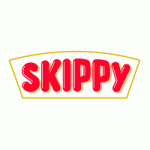
The ads will run continuously on an outdoor billboard and sign in front of every Walmart store to attract passing motorists. The ads will be rotated or switched every minute so that a passing motorists sees different ads each time he passes with the same message but with a different selection of Great Value products in the photograph.
Background Information
Walmart’s Private Label Product Packaging Re-Design
http://mattearleyworks.wordpress.com/2009/04/19/walmarts-private-label-product-package-re-design/
Wal-Mart chooses new advertising agency
Martin Agency known for quirky campaigs for GEICO and UPS
“…NEW YORK — Wal-Mart Stores Inc. said Friday that it has picked Interpublic Group of Co.’s Martin Agency, known for its quirky ads for GEICO insurance company and UPS, to help spearhead the discounter’s future image with consumers.
The decision comes after the world’s largest retailer in early December dumped its newly hired Draft FCB, another division of Interpublic Group, two days after the highly publicized firing of a top marketing executive, Julie Roehm along with her subordinate, Sean Womack.
Wal-Mart said Friday that Martin Agency will handle its creative responsibilities, and announced that Publicis Groupe SA’s MediaVest will oversee media buying and planning duties. Wal-Mart’s media and creative business is worth more than $500 million
Martin’ client list includes other big names such as Hanes and Discover Card. MediaVest’s long-standing clients include Coca-Cola Co. and Procter & Gamble Co.
“We’ve assembled a top-tier group of marketing partners that have deep retail experience, recognized creativity and an understanding of our customers,” said John Fleming, chief marketing officer at Wal-Mart, in a statement.
In an interview, John B. Adams, chairman and CEO of Martin Agency, based in Richmond, Va., said the agency’s “strong middle-American perspective” and its expertise in “provocative ads” make for a good combination for Wal-Mart. Its GEICO ads featured cavemen and testimonials from personalities like Little Richard.
“It is a useful perspective in doing work for Wal-Mart,” Adams said. ”
http://www.msnbc.msn.com/id/16601355/
http://www.martinagency.com/
Read Full Post | Make a Comment ( None so far )Unit 3 Part II, Assignment 3, Part 1, Wal Mart SWOT
UNit 3 Part II Princ. of Advertising
- Attached Files
 Major Methods of Advertising.rtf (7.517 KB)
Major Methods of Advertising.rtf (7.517 KB)
Unit 3, Part II: The Campaign, Cont…
Official Wal-Mart website:
Assignment #3b, Part 2
The Campaign: Create a mock Wal*Mart advertising campaign.
Read:
http://ezinearticles.com/?Advertising—How-to-Find-Your-Target-Audience&id=2385285
2. Review the platforms of advertising available from Unit 2.
3. Estimate the cost of each ad placement:
NOTE** this is a crisis response campaign. Soon we will be doing a new product campaign.
Part 2 is due Tuesday, July 27 at 5 p.m.

A product definition of Walmart would be we run discount stores.
A market-oriented definition of Walmart would be we deliver low prices, every day.
Before one can do a SWOT analysis of Walmart’s current situation, one must first know who are the current customers or buyers of Walmart products.
SWOT analysis: how to create a useful one
Walmart like most companies has several types of customers or buyers of the products they sell at their stores.
Walmart divides the market into a number of groups with distinct needs, characteristics, or behaviors who might require separate products or marketing mixes.
Market segmentation and targeting requires the identification of the market segments, selecting one or more of them, and developing products that are tailored to their needs.
There are at least three distinct groups of customers who shop at Walmart:
(1) Customers wanting to buy manufacture’s brands or national brands at lower prices than they usually find at other retail stores.
(2) Customers wanting to buy manufacturer’s brands or national brands at lower price as well as the Walmart’s private store brand products at even lower prices provided these products have the perceived quality of the national brand.
(3) Customers wanting the lowest priced products and usually purchase and use the Walmart private store brand products instead of the manufacturer’s national brand.
All three market segments are impacted by the current economic recession with over 30 million Americans seeking full-time employment.
Many customers who are unemployed can no longer afford purchasing the manufacturer’s national brands and are turning instead to the Walmart private store brand, Great Value, a national brand equivalent or NBE ,to save money.
WalMart switching to cheap generic items due to economy? Great Value brand
Wal-Mart CMO Defends Private-Label Expansion
The Food Industry, Part 1: Markets and Money
The Food Industry, Part 2: “Then, Now, and Tomorrow”
Those customers who are still employed or employed only part-time are also cutting back on the purchase of manufacturer national brands and trying and switching to the Walmart private store brands as seen above.
Given the economy is currently in a recession and unemployment levels will remain high for the next two years or longer, the market segments that purchase the Walmart private store brand products will be the focus of the Walmart SWOT analysis and advertising campaign.
The SWOT analysis below focuses primarily on Walmart’s grocery store and Great Value private store brand and does not cover Sam’s Club, discount stores and the non-grocery products and services.
Walmart SWOT Analysis
Strengths
World’s number one retailer in terms of sales revenues with over $400 billion in sales revenue in 2009.
An established and trusted retail brand with a reputation for lower price or value, convenience and a wide range of products in one retail store.
Largest private employer and grocery store retailer in the United States.
Recognized core competencies in information technology in support of its logistics and procurement systems.
Grocery items account for about 49% of Walmart sales revenues.
More than 8400 stores including about 800 discount stores, 3,100 combination discount and grocery stores (Wal-Mart Supercenters in the US and ASDA in the UK), and 595 Sam’s Club warehouses.
Reputation for low prices on manufacturer national brand products and Walmart private label brand products.
Over 40% of its sales are from private label brands through contracts with manufacturers.
Offers a wide variety of products in its stores.
World’s largest private brand, Great Value, with over 5,000 items.
Economies of scale in distribution because they can supply a wide range of products to the same customer base.
Walmart International is the fast-growing part of Walmart’s overall operations, with 4,112 stores and more than 680,000 associates in 14 countries outside the continental U.S.
The International division with 25% of sales is growing at a fast pace; it’s the #1 retailer in Canada and Mexico and it has operations in Asia (where it owns a 95% stake in Japanese retailer SEIYU), Europe, and South America.
People are a key resource and asset and Walmart invests time and money training and developing them.
Over 2.1 million employees worldwide and 1.4 million in the United States., the majority of which are full time employees.
One of the largest employers in United States and Canada, and the largest in Mexico.
Walmart Superstores offer twenty-four hour shopping.
Walmart Sam’s Club enable customers to purchase products in bulk at discount low prices
High customer satisfaction.
Family controlled company with Sam Walton heirs owning about 45% of the company.
Weaknesses
A global company with a presence in only fourteen countries worldwide.
Low market share outside of the United States.
Does not specialize in many product sectors and may not have the needed expertise in managing some of these product sectors as do their more focused competitors.
Big size stores may not work well in emerging markets, where customers may prefer small stores located in their communities compared to larger stores that may require travelling long distances outside of their communities.
Opportunities
Walmart currently operates in only 14 countries; and it has great opportunities to expand into other countries as well as grow within the countries they are currently operating in.
Form strategic alliances with other giant retailers in China, Europe and India.
The recession in the United States and the remainder of the world including those in which Walmart operates provides an opportunity for Walmart to switch their customers from manufacturer national brands to their own Walmart private and attract customer who normally do not shop at Walmart.
Acquire other discount retail and grocery stores in other markets for fast entry into other markets abroad.
Acquire manufactures of Walmart’s private store brand products.
Switch customers to higher profit margin Walmart private label brand, Great Value, from lower profit margin manufacturer national brands due to the recession.
Settle sex descrimination law suits that have merit to avoid unnecessary, costly and prolonged litigation, negative publicity and impact on customer and employee base.
Continue and expand successful growth strategy of large supercenters.
Threats
Faces competition from local, regional, national and international business firms.
Top competitors are Carrefour SA, Costco Wholesale Corporation, Kroger, and Target Corporation.
Intense price competition from falling manufacturing costs in lower cost regions due to outsourcing.
Target of lawsuits from litigants who perceive Walmart as a deep pocket financially.
Small companies can compete successfully by distributing specialty products or providing superior customer service
Many competing companies are outsourcing which leads to greater competition on price.
Many small towns do not want Walmarts to establish a store in their community because many small businesses cannot compete on price and subsequently close down once a Walmart store is openned.
Subject to political and foreign exchange currency risks in countries when operating abroad.
Background Information
In grocery sales, Wal-Mart sacks competition
“…While much of retail has experienced sharply declining sales for more than a year, food – especially if perceived as a good value – still brings customers through the door.
“It’s all about foot traffic, and foot traffic is just not happening unless you have the food to draw people in,” said Patricia Edwards, a retail analyst and founder of Storehouse Partners LLC in Seattle.
Wal-Mart gets more than half the grocery dollars spent in Arkansas, Oklahoma and Mississippi and is the top grocer in the other states that border Arkansas, according to Shelby Publishing Co. Inc. of Gainesville, Ga., which tracks the supermarket business.
Globally, Wal-Mart had $401.2 billion in sales for its fiscal year that ended Jan. 31, and grocery items accounted for 49 percent of that figure, according to the company’s annual report. …”
http://wakeupwalmart.com/news/article.html?article=2212
Private label plays off low-key, low-price approach – Wal-Mart, Target marketing strategies
“…Traversing a Wal-Mart store looking for proprietary brands isn’t as straightforward as it might seem. Unlike other discounters and supermarket chains this retailer doesn’t plaster the store name on house brands or make a big deal out of the product line as a point of differentiation. Rather, it simply and unobtrusively offers inexpensive product to its value-conscious customers.
Wal-Mart has long operated its merchandising programs in such a manner. It doesn’t advertise product in the traditional sense. Where other retailers spend hundreds of millions of dollars running Sunday circulars and using co-op advertising money from manufacturers to run product-heavy ads, Wal-Mart uses its every-day-low-pricing (EDLP) strategy to cut out that enormous expense and keep prices on both private-label and national brands as low as possible.
So it stands to reason that it would adopt a similarly low-profile approach to marketing its house brands. All proprietary product is positioned within its respective category based on price.
“Wal-Mart’s strategy is to reinforce their price leadership,” said Sid Doolittle of the consulting firm McMillan/Doolittle. “That’s their main theme; they’ve stuck with it for a long time, and it works. …”
http://findarticles.com/p/articles/mi_m0FNP/is_11_40/ai_75452808/
Private Label Trends
“…Private label describes products manufactured for sale under a specific retailer‘s brand. They are often designed to compete against branded products, offering customers a cheaper alternative to national brands. Though the public generally used to see them as low-cost imitations of branded products, private labels have overcome this reputation and achieved significant growth in recent years. The most commonly known private label goods are the “store brands” sold by food retailers, though this is just one example of many. Department stores, electronics stores, and office supply retailers all offer private label products or services.
Private labels offer several benefits to both retailers and customers, driving the segment’s rising popularity. For retailers, margins on private label goods are an average of 10% higher than those on similar branded products. Customers benefit from private labels’ lower prices, which are often significantly less than those of national brands. This combination, while beneficial to retailers and consumers, can put substantial pressure on the manufacturers of branded goods, who have to compete against their own customers (the retailers) for market share. …”
“…Private label goods are generally much cheaper to produce than branded goods, due to the lack of advertising and marketing expenses. As such, retailers are able to purchase private label goods for much less than they would have to pay for comparable branded products. The cost difference is usually large enough that retailers can offer customers lower prices while still making higher profit margins themselves. Lower prices can be enticing to customers and increase a company’s competitiveness. Small chains have a particular incentive to offer private label goods; they are often unable to match larger retailers’ prices for branded goods, but private label can allow them to price more competitively. …”
http://www.wikinvest.com/concept/Private_Label_Trends
“…Wal-Mart Stores, Inc. (formerly branded as Wal-Mart, branded as Walmart since 2008) (NYSE: WMT) is an American public corporation that runs a chain of large discount department stores and a chain of membership required warehouse stores. In 2010 it was the world’s largest public corporation by revenue, according to the Forbes Global 2000 for that year.[6] The company was founded by Sam Walton in 1962, incorporated on October 31, 1969, and publicly traded on the New York Stock Exchange in 1972. Wal-Mart, headquartered in Bentonville, Arkansas,[7] is the largest majority private employer[8] and the largest grocery retailer in the United States. In 2009, it generated 51% of its US$258 billion sales in the U.S. from grocery business.[9] It also owns and operates the Sam’s Club retail warehouses in North America.
Wal-Mart operates under its own name in the United States, including the 50 states and Puerto Rico. Wal-Mart operates in Mexico as Walmex, in the United Kingdom as Asda (“Asda Wal-Mart” in some branches), in Japan as Seiyu, and in India as Best Price. It has wholly-owned operations in Argentina, Brazil, and Canada. Wal-Mart’s investments outside North America have had mixed results: its operations in the United Kingdom, South America and China are highly successful, while it was forced to pull out of Germany and South Korea when ventures there were unsuccessful. …”
“…In March 2006, Walmart sought to appeal to a more affluent demographic. The company launched a new Supercenter concept in Plano, Texas, intended to compete against stores seen as more upscale and appealing, such as Target.[35][36] The new store has wood floors, wider aisles, a sushi bar, a coffee/sandwich shop with free Wi-Fi Internet access, and more expensive beers, wines, electronics, and other goods. The exterior has a hunter green background behind the Wal-Mart letters, similar to Wal-Mart Neighborhood Markets, instead of the blue previously used at its supercenters.
On September 12, 2007, Walmart introduced new advertising with the slogan, “Save Money Live Better,” replacing the “Always Low Prices, Always” slogan, which it had used for the previous 19 years. Global Insight, which conducted the research that supported the ads, found that Walmart’s price level reduction resulted in savings for consumers of $287 billion in 2006, which equated to $957 per person or $2,500 per household (up 7.3% from the 2004 savings estimate of $2,329).[37]
On June 30, 2008, Walmart unveiled a new company logo, featuring the non-hyphenated name “Walmart” followed by a stylized spark, as it is referred to on store advertisements. The new logo received mixed reviews from some design critics, who question whether the new logo is as bold as competitors such as the Target bullseye or as instantly recognizable as the former company logo, which was used for 18 years.[38] The new logo made its debut on the company’s walmart.com website on July 1, 2008. The new logo will eventually replace store logos at the company’s US locations throughout the year[clarification needed which year].[39] Wal-Mart Canada started to adopt the logo for its stores in early 2009.
On March 20, 2009, Wal-Mart announced that it is paying a combined $933.6 million in bonuses to every full and part time hourly worker of the company. An additional $788.8 million in profit sharing, 401(k) contributions, and hundreds of millions of dollars in merchandise discounts and contributions to the employees’ stock purchase plan is also included in this plan. While the economy at large was in an ongoing recession, the largest retailer in the U.S. reported solid financial figures for the most recent fiscal year (ending January 31, 2009), with $401.2 billion in net sales, a gain of 7.2% from the prior year. Income from continuing operations increased 3% to $13.3 billion, and earnings per share rose 6% to $3.35.[40] …”
http://en.wikipedia.org/wiki/Wal-Mart
List of Walmart Brands
“…Great Value
Great Value was launched in 1993 and forms the second tier, or national brand equivalent (“NBE”), of Walmart’s grocery branding strategy.
Products offered at Walmart through the Great Value brand are claimed to be as good as national brand offerings, but are typically sold at a lower price because of minimal marketing and advertising expense. In fact, in early 2009, Walmart had over 5,200 testers who failed to prove that the new Great Value revamp was better than the national brand. As a house or generic brand, the Great Value line does not consist of goods produced by Walmart, but is a labeling system for items manufactured and packaged by a number of agricultural and food corporations, such as ConAgra, which, in addition to releasing products under its own brands and for Walmart, also manufactures and brands foodstuffs for a variety of other chain stores.
As Walmart’s most extensively developed retail brand, covering hundreds of household consumable items, the Great Value line includes sliced bread, frozen vegetables, frozen dinners, canned foods, light bulbs, trash bags, and many other traditional grocery store products. The wide range of items marketed under the Great Value banner makes it Walmart’s top-selling retail brand.
The Great Value brand can also be seen in Canada, Mexico, Argentina and Brazil and some Trust Mart stores in Xi’an, Shaanxi Province, China through a partnership with Walmart.
By mid-summer 2009, Walmart had redesigned the Great Value labels to be predominantly white. The new redesign also includes over 80 new items including thin crust pizza, fat free caramel swirl ice cream, strawberry yogurt, organic cage-free eggs, double stuffed sandwich cookies, and teriyaki beef jerky. Walmart changed the formulas for 750 items including: breakfast cereal, cookies, yogurt, laundry detergent, and paper towels. The new brand was tested by over 2,700 people.[1] Other retailers are following suit with their private label packaging as well.[citation needed]
http://en.wikipedia.org/wiki/List_of_Wal-Mart_brands
Wal-Mart says Castro-Wright leaving his current post
“…Walmart U.S. has lost some higher-income shoppers gained during the recession and is facing stronger competition from rivals including Target Corp. … and Dollar General Corp. …”
“…The chain has been remodeling stores to make it easier and more pleasant to shop. It’s also cut prices on thousands of items and is bringing back some products to its U.S. store shelves after a move to narrow product assortment alienated shoppers who couldn’t find what they wanted — something Castro-Wright described as “self-inflicted pain” earlier this month at the Wal-Mart annual meeting. …”
http://www.marketwatch.com/story/wal-marts-promoting-from-within-for-key-us-post-2010-06-29
Wal-Mart plans to widen price gap, eyes more acquisitions
“…Wal-Mart has cut prices on thousands of products — its so-called rollbacks or price cuts for 90 days — in its U.S. namesake stores, and has made similar moves in its overseas chains, such as the U.K.’s Asda, as the retailing behemoth vied with rivals from Target Corp. /quotes/comstock/13*!tgt/quotes/nls/tgt (TGT 52.68, +0.79, +1.52%) to Family Dollar Stores Inc. /quotes/comstock/13*!fdo/quotes/nls/fdo (FDO 39.51, +0.04, +0.10%) that also have been sharpening their price message, analysts said. Target’s sales have outpaced that of Wal-Mart.
“In some cases we’ve lost some of the promotional price intensity,” said the company’s U.S. Wal-Mart unit’s chief, Eduardo Castro-Wright. “Competitors in certain segments of the trade have become very price oriented. We’ve responded.”
http://www.marketwatch.com/story/wal-mart-to-widen-price-gap-eyes-mobile-potential-2010-06-04
Sex Discrimination Lawsuit Against Wal-Mart Allowed to be a Class Action
“…The world’s largest retailer, Wal-Mart, is squarely in the crosshairs of a sex discrimination class action lawsuit that may have far reaching implications on sex-based bias in the workplace. On April 26, 2010, a federal appeals court in San Francisco ruled that the lawsuit against the retail giant may proceed as a class action. Originally filed in 2001 by six female employees, the suit alleges that Wal-Mart systematically discriminated against female employees by denying promotions, paying women less than men and giving women smaller raises.
Prior Sex Discrimination Suits
Wal-Mart has settled scores of sex-discrimination lawsuits in recent years. It recently settled a lawsuit filed by the Equal Employment Opportunity Commission (EEOC) where the Commission alleged that Wal-Mart denied jobs to female applicants at its London, Kentucky distribution center from 1998 to 2005. However, in the present case, Dukes v. Wal-Mart Stores, Inc., the Plaintiffs sought to certify a much larger class of potential plaintiffs: women who may have worked at any Wal-Mart store in the United States after December 26, 1998. This prospective class would include hourly and salaried workers in 3,400 locations who may have been subject to Wal-Mart’s allegedly discriminatory policies regarding equal pay and promotions …”
Walmart Corporate
http://walmartstores.com/7663.aspx
Official Walmart Site
http://www.walmart.com/
SWOT Analysis
SWOT Analysis: How to perform one for your organization
Video Lesson SWOT Analysis
Rob Frankel on Wal-Mart’s Sinking Brand
Walmart SWOT
http://www.marketingteacher.com/swot/walmart-swot.html
Read Full Post | Make a Comment ( None so far )Unit 3, Part I, The Advertising Campaign
 How to create an advertising strategy.doc (33.5 KB)
How to create an advertising strategy.doc (33.5 KB)Principles of Advertising
Unit 3, Part I , The Advertising Campaign
a. Describe a SWOT analysis and how a SWOT analysis works
How to Do a SWOT Analysis
The late advertising legend David Ogilvy emphasizes the importance of discipline in art and the need to follow rules and regulations to produce a great advertising campaign.
Chapter 1: Situation Analysis
Chapter 3: Problems and Opportunities
Chapter 4: Marketing Objective
Chapter 5: Budget
The Advertisng Campaign Planning Document
Chapter 6. Marketing Strategy
Chapter 7: Advertising Creative
Chapter 8: Advertising Media
Chapter 9: Sales Promotion
Chapter 10: Marketing Communications (MARCOM)
Chapter 11: Evaluation (Research)
Chapter 12: Test Marketing
David Ogilvy provide the following useful definition:
“…a good advertisement is one which sells the product without drawing attention to itself. It should rivet the reader’s attention on the product. Instead of saying, “What a clever advertisement,” the reader says, “I never knew that before. I must try this product.” (page 90 of Confessions of An Advertising Man).
- What You Say Is More Important Than How You Say It.
- Unless Your Campaign Is Build Around a Great Idea, It Will Flop.
- Give the Facts.
- You Cannot Bore People into Buying.
- Be Well-Mannered, But Don’t Clown.
- Make Your Advertising Contemporary.
- Committees Can Criticize Advertisements, But They Cannot Write Them.
- If You Are Lucky Enough To Write A Good Advertisement, Repeat It Until It Stops Pulling.
- Never Write an Advertisement Which You Wouldn’t Want Your Own Family To Read.
- The Image and the Brand must be coherent and stable and the advertising must contribute to this.
- Don’t Be A Copy-Cat.
National Advertising Campaign
Honda’s Power of Dreams Campaign is a national corporate brand campaign that builds on Honda’s corporate theme, “Power of Dreams”:
http://dreams.honda.com/#/background
http://dreams.honda.com/#/video_la
Honda Creates Original Short-Film Documentaries for Corporate Brand Campaign
One Film in the Cinematic Series by an Acclaimed Director to be Screened at Sundance Film Festival
http://world.honda.com/news/2009/c090112Original-Short-Film/printerfriendly/index.html
Kick Out the Ladder
Racing Against Time
Honda the Power of Dreams Failure: The Secret to Success
Background Information
Honda “Impossible Dream” Commercial
the new Honda Impossible Dream 2010
Local (Texas) Advertising Campaign
University of Texas at Austin has a Texas advertising campaign with the theme of “What Starts Here Changes the World,” with nine broadcasting television spots.
http://www.utexas.edu/inside_ut/tvspot/
University of Texas at Austin ““What Starts Here Changes the World”
University of Texas Ad – Minds
University of Texas Ad – Soul
University of Texas Ad – We’re Texas
University of Texas Ad – Change
University of Texas Ad – Gutenberg
University of Texas Ad – Sole Purpose
University of Texas Commercial – “We’re Texas” Rallying Cry Ad
University of Texas Ad – Yet
Background Information
SWOT analysis: how to create a useful one
Market segmentation: a case study OxfordLearningLab
How to Advertise to market segments
World Class Marketing – Market Segmentation
Marketing communications: The scope
SWOT
“…SWOT analysis is a strategic planning method used to evaluate the Strengths, Weaknesses, Opportunities, and Threats involved in a project or in a business venture. It involves specifying the objective of the business venture or project and identifying the internal and external factors that are favorable and unfavorable to achieve that objective. The technique is credited to Albert Humphrey, who led a convention at Stanford University in the 1960s and 1970s using data from Fortune 500 companies.
A SWOT analysis must first start with defining a desired end state or objective. A SWOT analysis may be incorporated into the strategic planning model. Strategic Planning, has been the subject of much researchCitation Needed.
-
- Strengths: attributes of the person or company that are helpful to achieving the objective(s).
- Weaknesses: attributes of the person or company that are harmful to achieving the objective(s).
- Opportunities: external conditions that are helpful to achieving the objective(s).
- Threats: external conditions which could do damage to the objective(s).
Identification of SWOTs are essential because subsequent steps in the process of planning for achievement of the selected objective may be derived from the SWOTs.
First, the decision makers have to determine whether the objective is attainable, given the SWOTs. If the objective is NOT attainable a different objective must be selected and the process repeated.
The SWOT analysis is often used in academia to highlight and identify strengths, weaknesses, opportunities and threats [citation needed]. It is particularly helpful in identifying areas for development [citation needed]. …”
http://en.wikipedia.org/wiki/SWOT_analysis
“…Honda’s Impossible Dream is a panoramic 2 minute long television commercial that was launched on December 2, 2005 in the United Kingdom. It anchored the “Power of Dreams” campaign which also included a website with extensive information about the series of vintage Honda vehicles that were chosen to illustrate the dreams of the founder of Honda. It features an actor (Simon Paisley Day) singing, riding and driving across the scenic shorelines and roads of New Zealand, Twin Ring Motegi in Japan, and the Iguazu Falls in South America. …”
Defintion of Advertising Campagin
“…Coordinated series of linked advertisements (broadcast usually through several media channels) that (1) focus on a common theme and one or few brands or products, (2) are directed at a particular segment of the population (targeted audience), and (3) are aimed at achieving a specific objective (such as awareness or market share). Successful advertising campaigns achieve far more than the sporadic advertising, and may last from a few weeks and months to years. ..”
http://www.businessdictionary.com/definition/advertising-campaign.html
“…Top 10 Tips for an Effective Advertising Campaign
The goal of advertising is to cost-effectively reach a large audience and attract customers. If done correctly, advertising can enhance the success of your business. Here are 10 advertising tips to pay attention to:
- Go after your target audience. An advertising campaign should be geared to your niche market. It is a common mistake to create generic ads that do not speak the language or grab the attention of your potential customers. For more information, read How to Identify and Reach Niche Markets for Your Business.
- Highlight your competitive advantage. One of the keys to all advertising is to accentuate the pros of your company, those factors that give you your competitive edge. Too many ads are clever but fail to sell the benefits of the product or service.
- Establish an image. You can recognize the McDonald’s arches while whizzing by on the highway. Likewise, there are plenty of products that you recognize by their packaging or logo. Image counts when it comes to advertising and promoting your business. Too many advertisers do not work to build a consistent image. Check out Three Brand Identity Myths That Will Bring Your Business Down for additional issues to avoid.
- You have to spend money to make money. There are ways to save money, but typically advertising is not the place to cut corners. It will affect sales, and that affects the bottom line. Successful advertising may cost some money, but that is because it works. Check out More Bang for Your Advertising Buck for cost-cutting tips that won’t cut your goals.
- Advertise in the right places. Your favorite magazine, radio station, or even television program might not be a favorite of your audience. Know what they read, watch, and listen to, and advertise in media that reaches your target market.
- Don’t allow your budget to run your advertising campaign. If you budget $5,000 per month for advertising, you’ve made it very easy from a bookkeeping perspective. However, if like most businesses you have seasonal highs and lows, you are spending too much money advertising during down times and not enough when you want to attract customers. Too many entrepreneurs do not budget according to their seasonal advertising needs.
- Diversify. It is all too common for business owners to choose the best place to advertise based on price and potential rate of returns and then stop. As is the case with investing, you do not want to put all of your eggs in one basket. Spread your advertising dollars around.
- Don’t try to be everything to everyone. No product or service will appeal to everyone. Many business owners, including corporate executives, try to come up with ways to reach every market. Typically, this does not work. It can spell disaster for small businesses, who cannot afford to spread themselves too thin. Therefore, find your market and be everything you can be to that audience.
- Test your ads in advance. If you have the time or money to invest in focus groups, you should test your ads on other people. Do they understand and accept the message that you are trying to convey? For further information, read Focus Groups: How They Can Work for Your Small Business. There are other less-expensive ways to test your ads as well: questionnaires, for example. The article Creating Questionnaires for Gathering Market Research can be helpful.
- Monitor your ads. It is very easy to ask new customers or clients where they heard about you. As simple as this is, many entrepreneurs do not bother to do so. It is advantageous to know which ads generate business….”
http://www.allbusiness.com/marketing/advertising/3983-1.html
Read Full Post | Make a Comment ( None so far )Unit 2 Advertising–History of Advertising
Unit 2 Advertising_ History of Advertising .ContentGo to the following link and answer the questions in your Assignment Blog
Title: Unit 2_ Assign 1
A Brief History of Advertising:
A. Go to the following link and read through the brief history of advertising.
http://historymatters.gmu.edu/mse/ads/intro.html
-Complete the quiz “Match the Ad to its Purpose.”
-Answer the following questions in your blog:
1. What three devices did Benjamin Franklin use in his publication the Pennsylvania Gazette to reach out to readers?
The three device that Benjamin Franklin used in his Pennsylvania Gazette to reach out to reader were headlines, illustrations, and advertising placed next to editorial material.
Franklin also published stories on politics, political cartoons to illustrate these stories, the community’s weather and current events, foreign affairs, and under Pennsylvania Gazette header used the tagline–“Containing the freshest Advices Foreign and Demestick”.
Background Information
History of Advertising 2/9
“…This political cartoon (attributed to Benjamin Franklin) originally appeared during the French and Indian War, but was recycled to encourage the American colonies to unite against British rule. From The Pennsylvania gazette, 9 May 1754. Abbreviations used: South Carolina, North Carolina, Virginia, Maryland, Pennsylvania, New Jersey, New York, and New England. This is a somewhat odd division: New England was four colonies, and Delaware and Georgia are missing …”
http://en.wikipedia.org/wiki/File:Benjamin_Franklin_-_Join_or_Die.jpg
http://www.earlyamerica.com/earlyamerica/past/past.html
“…Selections, 1730-1743
In 1750 in New England, almost 70 percent of white men and 45 percent of white women could read; in the southern colonies, about 50-60 percent of men and 40 percent of women. With a literacy rate greater than Britain, the colonies by mid century hosted more newspapers than the mother country.1 A sample of this expansive output is this collection of brief items from Benjamin Franklin’s newspaper, The Pennsylvania Gazette, “containing the freshest Advices Foreign and Domestick.” Together they offer a window into life in the middle colonies in the mid 1700s: fire, earthquake, weather extremes, smallpox, the revival tour of Rev. George Whitefield, the king’s birthday, the mayor’s feast for the city’s citizens, fundraising for a “Negro school,” return of a castaway, the birth of triplets, the exhibition of a live camel from Arabia, a fraudulent marriage, spousal abuse, a false charge of rape, the murder of an enslaved boy, death by alcohol, a hunting accident, robberies, obituaries, advertisements, and Franklin’s announcement of his editorial policy. …”
http://nationalhumanitiescenter.org/pds/becomingamer/ideas/text5/pennsylvaniagazette.pdf
Benjamin Franklin
“…Franklin’s Pennsylvania Gazette provided information about politics to the people. Ben Franklin used political cartoons to illustrate news stories and to heighten reader appeal. The May 9, 1754 issue included Join, or Die, which is widely considered the first American political cartoon. Devised by Franklin, the cartoon reflected concern about increasing French pressure along the western frontier of the colonies.
Statesmen
To protest the Stamp Act provisions, which required newspapers be printed on imported, stamped paper, Franklin had the November 7, 1765 edition of the Pennsylvania Gazette printed without date, number, masthead, or imprint. In doing so, he highlighted the impact of royal policies on colonial freedom and exerted colonists’ autonomy.
http://inventors.about.com/od/fstartinventions/a/Franklin.htm
2. What does the article say was a particularly disturbing form of advertisements in the 18th and 19th century?
A disturbing form of advertisement were notices of slave sales or appeals for the capture of escaped or runaway slaves with rewards for their return. (see photos below)
Background Information
Collecting 19th Century Authentic Newspapers
Rare News Papers
3. How did mass production of goods in the 1880’s affect advertising revenues and methods?
The mass production of goods in the 1880s such as canned food, soap, and cigarettes in great quantities required these businesses to first find buyers and second persuade the buyers to purchase their products.
In addition to the manufactures of mass produced goods, other businesses such as large retail department stores in rapidly growing cities turned to advertising to sell their goods.
As a result the total advertising volume increased from $200 million dollars in 1880 to nearly $3 billion in 1920.
Advertising agencies that before 1880 primarily sold advertising space in local newspapers and a limited number of magazines, expanded their service for national advertisers by designing copy and artwork and positioning the advertisements to attract buyer attention. Advertising agencies and their employees sought legitimacy and public approval with many in the advertising business dissociating themselves from the fraud and swindles of the patent medicine peddlers.
Background Information
History of Advertising 3/9
4. What character, introduced in 1955, changed one cigarette company’s target and launched the company into becoming the best-selling brand? What changed?
Marlboro cigarettes were originally targeted for woman as being “Mild as May”.
In 1955 the Philip Morris & Co. targeted the Marlboro brand of cigarettes at men in the ”Tatooed Man'” campaign.
The character was became known as The Marlboro Man.
The target of the advertising campaign changed from women to men.
In 1955 a number of medical research studies found that cigarettes may cause lung cancer.
In response to this, a number of cigarette companies added filters to their cigarettes.
Philip Morris used this opportunity to expand its customer base by adding men who were concerned about cancer by switching them to the Marlboro brand whose tobacco flavor was mild but now also had a filter and came in a flip top box.:
“Man-sized taste of honest tobacco comes full through. Smooth-drawing filter feels right in your mouth. Works fine but doesn’t get in the way. Modern Flip-top box keeps every cigarette firm and fresh until you smoke it.” –
~Phillip Morris Marlboro Advertisement
Background Information
The Marlboro Man
History of Advertising 1/9
The Marlboro Man
“…The Marlboro Man is a figure used in tobacco advertising campaign for Marlboro cigarettes. In the United States, where the campaign originated, it was used from 1954 to 1999. The Marlboro Man was first conceived by Leo Burnett in 1954. The image involves a rugged cowboy or cowboys, in nature with only a cigarette. The ads were originally conceived as a way to popularize filtered cigarettes, which at the time were considered feminine.
The Marlboro advertising campaign, created by Leo Burnett Worldwide, is said to be one of the most brilliant ad campaigns of all time. It transformed a feminine campaign, with the slogan “Mild as May”, into one that was masculine, in a matter of months. Although there were many Marlboro Men, the cowboy proved to be the most popular. This led to the “Marlboro Cowboy” and “Marlboro Country” campaigns.[1] …”
The Marlboro Man Meets the Surgeon General
“…Philip Morris saw its chance to reintroduce Marlboro in the early fifties when the first studies linking cigarette smoking to lung cancer were released. Consumers began feeling mislead by the established brands and dropped their old allegiances. They were willing to try other brands but were unable to break away from smoking completely, due to what would later be attributed to nicotine addiction. Disillusioned consumers turned to Marlboros, the new “safer” filtered brand. Ross B. Millhiser, president of Philip Morris in 1968, looked back on Marlboro’s window of opportunity and explained that “the filter revolution caused more switching than all the cigarette manufacturers with all their money could have induced.”(White 121) Unfortunately for Marlboro, formerly known to be “Mild as May”, the new filters were considered effiminate. The dilemma would be to appeal to the attitudes of an old group of customers with a new concern, addicted men who feared lung cancer.
Philip Morris took the challenge to a midwestern agency, the Leo Burnett Company of Chicago, and reintroduced Marlboro to the nation in 1955 with the “Tattooed Man” campaign. Joseph Cullman, then president and chief executive officer of Philip Morris Inc., explained, “We felt that West of the Alleghanies we could secure a better understanding and feel of grass-roots America and what it wanted in a cigarette.”(Esquire 8/60 146) The resulting campaign assured buyers, with television commercials and printed pages, that “You get a lot to like with Marlboro, filter, flavor, flip- top box.” The image of the “new Marlboro smoker as a lean, relaxed outdoorsman–a cattle rancher, a Navy officer, a flyer–whose tattooed wrist suggested a romantic past, a man who had once worked with his hands, who knew the score, who merited respect,”(Esquire 6/60 146) proved that there was nothing sissy or feminine about these filtered cigarettes. The first advertisements spoke directly to the masculine audience suggesting in a descriptive paragraph that they try “old fashioned flavor in a new way to smoke.” They reassured men that the filter did not change Marlboro quality and the
Man-sized taste of honest tobacco comes full through. Smooth-
drawing filter feels right in your mouth. Works fine but doesn’t
get in the way. Modern Flip-top box keeps every cigarette firm
and fresh until you smoke it. (Made in Richmond, Virginia, from
a new Marlboro Recipe) …”
“…Philip Morris, with the Marlboro cowboy, has capitalized on what the cigarette advertising industry realized as an unique quality in its products. “The physical characteristics of the standard brands are nearly identical and their individual demands are highly elastic, yet despite close similarity, consumers are not indifferent to the choice of brands but show enduring loyalties based upon very slight physical differences or upon irrational grounds.”(Tennant 163). The irrational appeal of the strong individual is bolstered by the strong geometric design of the red, white and black-lettered flip-top package. It was designed by Frank Gianininoto in 1954 and carefully tested through consumer surveys by Elmo Roper&Associates and the Color Research Institute.(Advertising Age 11/9/88) When displayed on open cigar counters consumer reaction was gauged on hidden cameras as their eyes settled on the bright packaging(Esquire 6/60). Like a cowboy’s holster for his favorite gun the packaging makes a statement. It is estimated that the average smoker removes his or her cigarettes 20-25 times a day. In 1987, Thirty-two years after the box was designed, Forbes magazine(2/9/87) polled smokers and offered them Marlboro cigarettes unaltered except in a generic brown box and at half price. Only 21% were interested. The public embraced the red box as a symbol of membership to the club that recognized the Marlboro Man as their spokes-person. A 1959 ad showed the Flip-top box as a unifying element “From the Klondike to Key West…. Every man is a ‘Marlboro Man’ once he discovers that Marlboro is for real smoking.” [Image 3]. The box is a carrying card available to everyone. It is visable proof of participation in or appreciation for a certain idealized way of life that not many actually get to experience. Consumers carrying the box were now investing themselves and their reputation in the positive image of the Marlboro Man. …”
http://xroads.virginia.edu/~class/marlboro/mman3.html
Marlboro Cigarettes
“…Since Marlboro filtered cigarettes were previously oriented mainly to the female smoking audience, Phillip Morris decided to extend the range of customers, touching the group of addicted male smokers who were afraid of acquiring lung cancer. Therefore advertising strategies were completely revised.
As a result the “Tattooed Man” campaign got under way in 1955. The new advertisements popularized the image of rugged men (a cattle rancher, a Navy officer, a flyer), – “whose tattooed wrist suggested a romantic past, a man who had once worked with his hands, who knew the score, who merited respect”. The new Marlboro smokers were portrayed smoking while performing manly tasks. “Man-sized taste of honest tobacco comes full through. Smooth-drawing filter feels right in your mouth. Works fine but doesn’t get in the way. Modern Flip-top box keeps every cigarette firm and fresh until you smoke it.” – Phillip Morris Marlboro Advertisement.
The campaign proved that there was nothing feminine about the filtered cigarettes and tripled sales by 1957. In 1954, the cowboy image was introduced and became the most popular Marlboro advertisement character ever. By 1963, the Marlboro cowboy became the only character in the marketing of Marlboro cigarettes. The geometric design of the red, white and black-lettered flip-top Marlboro package boosted the appeal of a strong independent individual.
By 1972, Marlboro cigarettes had become the most popular world-wide and have stayed that way for majority of years that have followed. By 1992, Financial World ranked Marlboro the world’s No. 1 most valuable brand, with a market worth of $32 billion. Currently, Philip Morris’ tobacco brands are in 180 markets, have a 38% market share in the US, are the top-selling cigarettes in the world, and the tenth-most valuable product brands overall.
http://www.cigoutlet.net/cigarettes/marlboro-cigarettes.html
Trivia: Marlboro Was a Woman’s Cigarette
“…Filtered cigarettes were considered feminine as reflected by Marlboro’s original slogan “Mild as May.” In the 1930s, Marlboro even changed the cigarette tips from ivory to red so they wouldn’t smear ladies’ lipstick.
In 1955 Philip Morris & Co. tried to change Marlboro’s feminine image with the “Tattooed Man” campaign, where a rugged cattle rancher, a Navy officer, and a flyer (all with muscular, tattooed hands) were shown holding a cigarette. Supposedly the tattoo was suggestive of “romantic past.” Later, ad genius Leo Burnett used the image of a cowboy to prove that the cigarettes weren’t for sissies, and thus “The Marlboro Man” was born. ..”
Marlboro
“…Marlboro (US: /ˈmɑrb(ə)roʊ/[1]) is the largest selling brand of cigarettes in the world. It is made by Philip Morris USA (a branch of Altria) within the US, and by Philip Morris International (now separate from Altria) outside the US. It is famous for its billboard advertisements and magazine ads of the Marlboro Man.
The brand is named after Great Marlborough Street, the location of its original London Factory. Richmond, Virginia is now the location of the largest Marlboro cigarette manufacturing plant.
Philip Morris, a London-based cigarette manufacturer, created a New York subsidiary in 1902 to sell several of its cigarette brands, including Marlboro. By 1924 they were advertising Marlboro as a woman’s cigarette based on the slogan “Mild As May”.
The brand was sold in this capacity until World War II when the brand faltered and was temporarily removed from the market. At the end of the war, three brands emerged that would establish firm holds on the cigarette market: Camel, Lucky Strike, and Chesterfield. These brands were supplied to US soldiers during the war, creating an instant market upon their return.
During the 1950s Reader’s Digest magazine published a series of articles that linked smoking with lung and other cancers. Philip Morris, and the other cigarette companies took notice and each began to market filtered cigarettes.[citation needed] The new Marlboro with a filtered end was launched in 1955. In the early 1960s Philip Morris invented “Marlboro Country” and distilled their manly imagery into the rugged cowboys known as the “Marlboro Men”. The famous slogan used on radio and television during the mid-’60s was, “Come to where the flavor is…come to MARLBORO COUNTRY”, backed by Elmer Bernstein’s theme from The Magnificent Seven.
In the USA, in order to comply with new regulations prescribed by the Food and Drug Administration, Marlboro had until June 22, 2010 to rebrand tobacco products marketed as “Lights”, “Ultra-Lights”, “Medium”, “Mild”, or any similar designation that yields an impression that some tobacco products are comparatively safe. Similar restrictions were applied in the European Union some years ago. …”
http://en.wikipedia.org/wiki/Marlboro_(cigarette)
Now visit this link and answer these questions in your Blog:
http://adage.com/century/timeline/index.html
1. What newspaper printed the first known advertisement?
In 1702 The Boston News-Letter’s printed the first known advertisement in the United States.
2. What magazine was the first magazine to carry $100 million annually in advertising?
Life magazine was the first magazine to carry $100 million annually in advertising.
3. What year did Congress prohibit broadcast advertising of cigarettes?
In 1971 Congress prohibited broadcast advertising of cigarettes.
4. What was The Associated Advertising Clubs of America?
In 1904 a group of advertising agencies, advertiser and media representatives formed The Associated Advertising Clubs of America.
Assignment 1 is due Monday, July 19 at 5 p.m.
Advertising Books–Videos
Hitting The Sweet Spot
By Lisa Fortini-Campbell, ISBN-13: 9781887229098
Positioning
By Al Ries and Jack Trout.
Brand Positioning by NextMove
Ladders in the Mind
Japanese Disease

Influence: The Paychology Of Persuasion
By Robert B. Cialdini, PhD., Harper Collins, ISBN-13: 9780061241895
Robert Cialdini – Renowned Expert in the Psychology of Influence, Negotiation & Communication
Robert Cialdini – Renowned Expert in the Psychology of Influence, Negotiation & Communication
Influence and Leadership
Truth, Lies and Advertising: The Art of Account Planning
By Jon Steel, ISBN13: 9780471189626
Jon Steel from WPP introduces and hosts the ‘Listen’ section
Guerrilla Advertising
By Jay Conrad Levinson and Charles Rubin, Mariner Books, ISBN 0395687187
Advertising Without an Agency
By Kathy J. Kobliski, Oasis Press, ISBN 1555714293
Hey, Whipple, Squeeze This: A Guide To Creating Great Advertising
By Luke Sullivan, John Wiley & Sons, ISBN-13: 9780470190739
Luke Sullivan Summarizes Ad Pro Session
Cutting Edge Advertising II
By Jim Aitchison,
The 33 Ruthless Rules of Local Advertising
By Michael Corbett, Pinnacle Books, ISBN 096673839X
The Anatomy of Buzz Revisited
By Emanuel Rosen, Doubleday, ISBN 0385496672
Interview with Emanuel Rosen at SES Toronto 2009
Firebelly Marketing | Duncan Alney and Emanuel Rosen | The Anatomy of Buzz Revisited
Emanuel Rosen keynote – PRSA-LA “New Media & Web 3.0”
Emanuel Rosen on generating buzz in the online and offline communities
http://search.barnesandnoble.com/The-Anatomy-of-Buzz-Revisited/Emanuel-Rosen/e/9780385526326–
The Advertising on the Internet
By Robin Lee Zeff and Brad Aronson, John Wiley & Sons, ISBN 0471344044
OGILVY ON ADVERTISING
David Ogilvy, Knopf Doubleday Publishing, ISBN-13: 9780394729039
A conversation about advertising, with David Ogilvy
Background Articles and Videos
Charlie Rose – Preview of interview with YouTube Co-founders
Honda Impossible Dream
Honda Ad
Oh Gode
Truth in Advertising
The Truth In Ad Sales
Related Posts On Pronk Palisades
History of Advertising–Videos
Read Full Post | Make a Comment ( None so far )History of Advertising–Videos
History of Advertising 1/9
History of Advertising 2/9
History of Advertising 3/9
History of Advertising 4/9
History of Advertising 5/9
History of Advertising 6/9
History of Advertising 7/9
History of Advertising 8/9
History of Advertising 9/9
Related Posts On Pronk Papers
Adam Curtis–The Century of Self–Videos
Read Full Post | Make a Comment ( 1 so far )« Previous Entries

